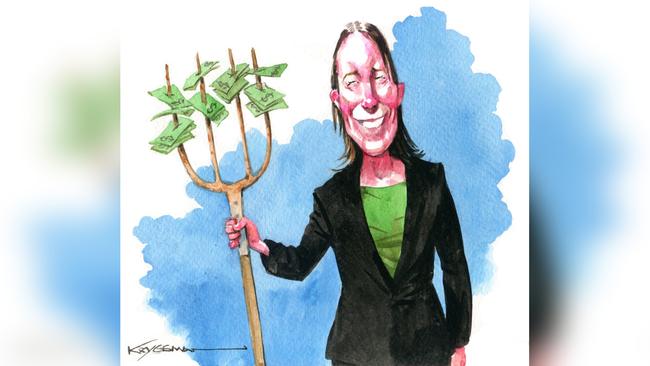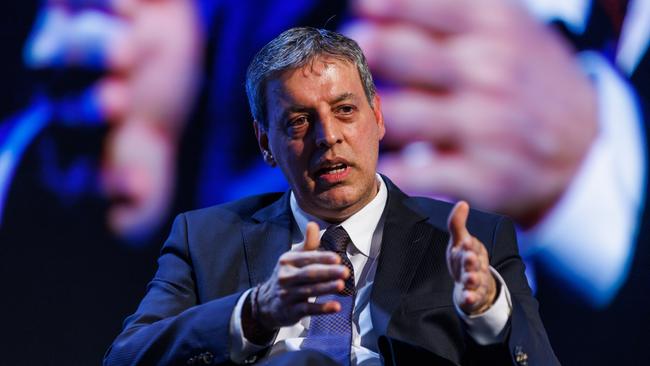
The debate is, of course, used by those looking for excuses not to rally to the cause.
Every self-serving interest group in the country was quick this week to claim the election landslide as providing a mandate to back its cause but in the carbon market political leadership remains missing in action.
In the vacuum the Australia Institute and others are maintaining their war on offset integrity.
Green Collar’s James Schultz argues it’s not an issue of good and bad offsets, like it’s “an either or issue”.
Offsets are only part of the solution, a way to get revenue into the farm sector to help drive better and more efficient investment in land management.
The ideological case against offsets is: why pay fossil fuel companies to continue creating new emissions at the petrol bowser when they can offset these through a couple of acres of plantations in the Amazon.
Everyone agrees fossil fuel emissions need to be cut.
Yet the faux debate festered in the media through the first term of the Albanese government has resulted in timid under-funded administration of environmental management, with the regulators overly cautious.
There is also a global public momentum swing against climate activism.
But the drive for genuine steps towards lower emissions continues. Contrary to some headlines, corporate interest in high-integrity carbon credits remains strong as shown by a mooted investment by BHP in a project run by Carbon Neutral, Australia’s biggest environmental planting manager.
For the big companies offsets are part of the long-term solution while they make their own cuts.
Climate Market Institute’s John Connor argues “investment in activities to reduce emissions and sequester or store carbon through changed livestock management, revegetation and soils management are incentivised through Australia’s carbon and emerging nature repair credit markets”.
The CMI held its ninth annual carbon-farming forum this week and joined the congo line of lobby groups claiming an election mandate.
If the government wants to keep the cost of living down, a market-based approach to boosting investment in the land sector is one way to increase efficiency.
Connor argues that “modelling results have shown that for Australia to help meet global targets, Australia needs at least an eight-fold increase in land-based carbon sequestration, alongside accelerating industrial decarbonisation”.
This is a cost the government can’t afford on its own.
The return of the Albanese government saw an increase in the price of carbon credit units by $1.50 early this week to $35.90, but by week’s end the enthusiasm waned and the price fell back around the $35.25 mark.
Kate Dooley from Melbourne University wants a complete overhaul to base offsets on fossil fuel carbon emissions and not on land-based projects which she maintains are subject to ongoing integrity issues.
Neither side disputes fossil fuels are the problem but the solution needs to be a wideranging, including on aviation fuel through mandated use of sustainable fuel (SAS) backed by investment credits to boost SAS production and schemes such as book and claim where one airline books credits for the increased SAS used by others.
Schultz argues if some have integrity concerns they can simply apply discounts to land-based projects, but the answer is not to cut options to achieving the climate targets.
Priorities
As a guide to what should come next The Australian asked five practitioners for their reform priorities:
Kate Dooley (Melbourne University): No land-based offsets (human-induced regeneration, reforestation etc out), phase out carbon credit units and replace them with safeguard mechanism credits, fix intensity baseline for safeguards system to be based on individual plants rather than collective bases.
Raf Wood (Silva Capital): ramp up method development to offset potential supply shortages, implement the rest of the Chubb review to ensure scheme integrity, establish an emissions reduction fund focused on nature repair to help establish market.
Skye Glenday (Climate Friendly): To improve farm efficiency and carbon reduction approve integrated farm land management method, integrate natural capital and implement Chubb recommendation for national project data base.
Phil Ireland (Carbon Neutral): Boost agency funding to help Clean Energy Regulator and then Department of Climate Change, strengthen and improve ACCU safeguards and step up project registrations linking carbon and nature.
James Schultz (Green Collar) – Properly scale up investment in the land sector, link nature repair to carbon conservation, and end debate on good and bad offsets because it is not an either or issue.
Gandhi having a blast
Orica chief Sanjeev Gandhi’s target is to grow earnings outside blasting so they match those from the core business but trouble is the blasting business is growing fast, making it hard to catch.
In what he described as the best results in a decade, earnings before interest and tax were up 34 per cent to $472.3m powered by a 29 per cent increase in blasting earnings to $435m.
Digital grew 31 per cent to $41m and mining chemicals by 72 per cent to $47m, which accounted for 20 per cent of group earnings.

The point being Gandhi’s aim to be a full-service mining services company is taking shape and the rise in the offshoots helps drive earnings in the core business.
It’s what he calls “a nice problem to have”.
Unfinished business includes plans to build a renewables based hydrogen plant at his Kooragang Island site near Newcastle.
Kooragang is the ideal hydrogen site given Orica provides the raw material and is the base customer, plus any surplus is easily shipped through the Port of Newcastle.
Origin dropped out of the project in 2024 thinking it uncommercial so Gandhi took over project management claiming backing from offshore and local investors and argues he is best suited in the country to build green hydrogen.
But in his view it only works with government backing sharing the capex and opex loads.
He is awaiting news on who will be the new minister in charge and will then take a trip to Canberra to press his case.
Orica has already taken a lead in carbon emission reduction, removing one million tonnes of carbon dioxide equivalent from its three nitric acid plants last year – the equivalent of taking 600,000 cars off the road.
The question is whether hydrogen still excites Canberra.
Productivity reform
Treasurer Jim Chalmers is on the record as declaring the productivity priority for this government, so the question is when he starts to promote the work in place from the National Competition Council to start a Hilmer mark campaign.
The state governments have agreed by June 30 to hand in their priorities to promote a more dynamic business environment, lower barriers to the labour market and harness the benefits to net zero through competition.
Chalmers has pencilled in $900m in payments to help the states including $266m to NSW, $219m to Victoria, $176.7m to Queensland, $96.3m to South Australia and $25.9m to Tasmania.
Last November, Productivity Commission handed him a report showing a list of 26 reforms would boost GDP by $26bn to $45bn, federal revenue by up to $9.2bn and state revenues by $2.4bn.
The reforms were not revolutionary and included more modern construction techniques (2bn), removal of restraints to trade in labour market ($2.6bn), road usage tax ($693m), more electric trucks (748m) and, for less gains but still important, remove barriers to telehealth, barriers to competition in banking, contestability in public procurement and better zoning rules.
It’s a work in progress and the missing element is the necessary public endorsement from the federal Treasurer.
This assumes he actually believes this stuff will work.







Woodside chair Richard Goyder noted this week everyone agrees on the need to decarbonise the world, it’s just a question of how, and that debate in Australia is missing crucial political leadership.